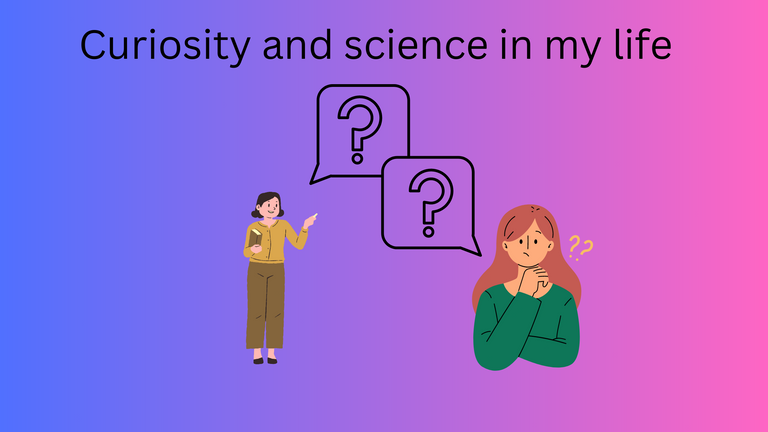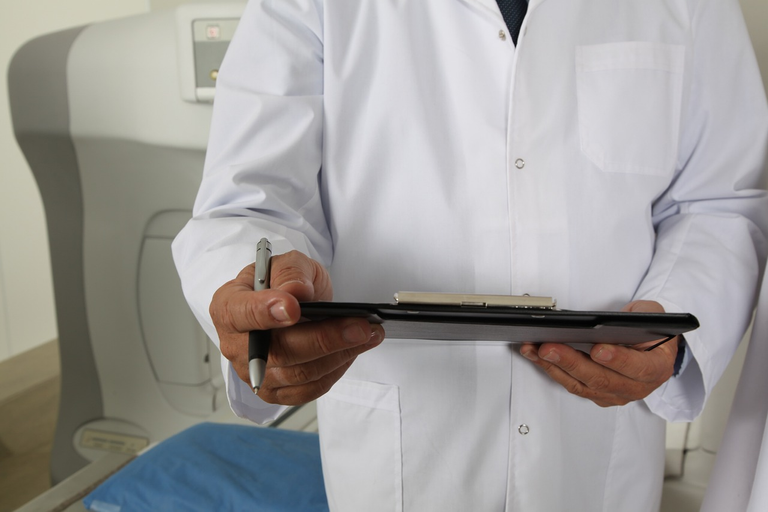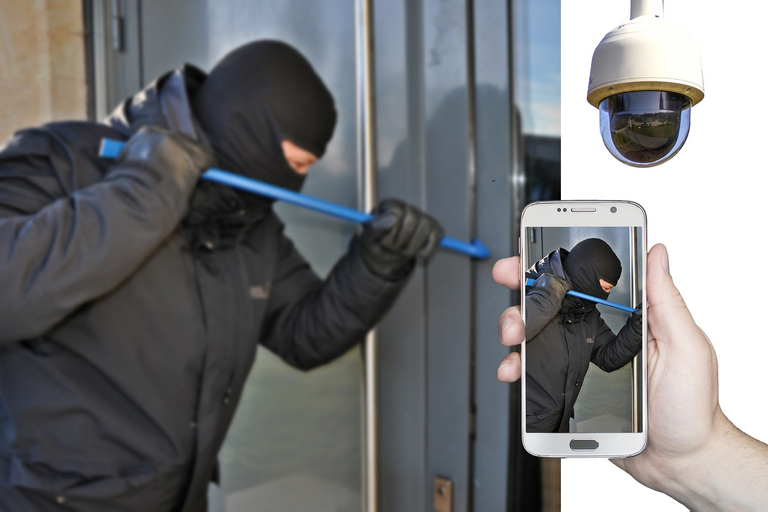Curiosity and science, how it affected my life.

Maybe that isn't the main goal of this Hive Learners' challenge to talk about how curiosity affected our lives, but curiosity is the basis for scientific thinking. Children start to understand their world that they just started to live with questions about how and why things work, that curiosity reduces or dies over time because we tend to accept that things are like that just because they are and other thoughts occupy our mind, such as succeding in school (kindergarten to university) and work. We don't care anymore why the sky is blue or how the waves of the sea are formed, it isn't important to know it, maybe we remember these questions when we have kids and they start to ask us about this again.
Talvez esse não seja o objetivo principal desse desafio do Hive Learners, falar sobre como a curiosidade afetou nossas vidas, mas a curiosidade é a base para o pensamento científico. As crianças começam a entender o mundo em que acabaram de entrar com perguntas sobre como e por que as coisas funcionam, mas essa curiosidade diminui ou morre ao longo do tempo, pois tendemos a aceitar que as coisas são como são e outros pensamentos ocupam nossa mente, como ter sucesso na escola (desde a pré-escola até a universidade) e no trabalho. Não nos importamos mais com o porquê do céu ser azul ou como as ondas do mar se formam, não é importante saber isso, talvez nos lembremos dessas perguntas quando tivermos filhos e eles começarem a nos questionar sobre isso novamente.

However, some of us continue asking about these questions and every time we have an answer we go deeper and deeper with other questions. We start with big questions that usually the answer is already known, which generates other questions, and we still don't know the answer. We can start with simple things like the moon. What is the moon? It is a natural body or satellite that orbits our planet Earth, we know a lot about the moon, its distance from the Earth, and how it doesn't fall into our planet (despite having a tragic sci-fi movie about it). But how it was formed? It is still a pretty open question, despite there being some evidence that the Moon has similar isotopes to Earth, so probably it was created after a big object hit our planet. So, we have a curiosity to know about how it was formed which made scientists look for the answer, and the first hypothesis that they tested is that maybe rocks compositions there are similar to here. During my academic life, I had some scientific questions that lead me to a good conclusion and a scientific publication. That was important to progress and sell my CV to my newest job. I can try a bit to explain how my last work finished with a happy ending. Our lab was performing a sequencing called Small RNA-Sequencing in cancer liquid biopsy. Basically, it excluded the big ones, including the RNAs that generate our proteins. However, nowadays we know that other RNAs are also important to biology, mostly in regulating the " production" of these proteins. At the time that I started this job, micro RNAS (miRNAs) so we focused a lot only on this type of RNA, but we knew there were other types of RNAs that we weren't looking into. So my first question was "How we can also analyze these other types of RNAs? How we can include them in our analysis?". So I developed a tool to do that, and know this tool can be used to answer biological questions and make associations of these other types of RNAs to diseases such as cancer. So basically, we published an article about this tool, and not long after our group published the first usage of this tool in pancreatic cancer patient's plasma samples.
No entanto, alguns de nós continuam fazendo essas perguntas e, a cada resposta que encontramos, vamos mais a fundo com outras questões. Começamos com grandes perguntas, para as quais geralmente já conhecemos a resposta, o que gera outras perguntas para as quais ainda não temos resposta. Podemos começar com coisas simples como a lua. O que é a lua? É um corpo natural ou satélite que orbita nosso planeta Terra. Sabemos muito sobre a lua, sua distância da Terra e como ela não cai em nosso planeta (apesar de existir um trágico filme de ficção científica sobre isso). Mas como ela foi formada? Essa é uma pergunta ainda em aberto, apesar de haver algumas evidências de que a Lua possui isótopos semelhantes à Terra, o que sugere que ela tenha sido formada após um grande objeto colidir com nosso planeta. Portanto, temos uma curiosidade em saber como ela foi formada, o que levou os cientistas a buscar a resposta, e a primeira hipótese que eles testaram é que talvez as composições das rochas lá sejam semelhantes às daqui. Durante minha vida acadêmica, tive algumas perguntas científicas que levaram a uma boa conclusão e a uma publicação científica. Isso foi importante para progredir e valorizar meu currículo para meu novo emprego. Posso tentar explicar um pouco como meu último trabalho teve um final feliz. Nosso laboratório estava realizando uma sequenciação chamada Small RNA-Sequencing em biópsias líquidas de câncer. Basicamente, excluía os grandes, incluindo os RNAs que geram nossas proteínas. No entanto, hoje em dia sabemos que outros RNAs também são importantes para a biologia, principalmente na regulação da "produção" dessas proteínas. Na época em que comecei esse trabalho, os microRNAs (miRNAs) eram os mais estudados, então nos concentramos muito nesse tipo de RNA, mas sabíamos que existiam outros tipos de RNAs que não estávamos investigando. Então minha primeira pergunta foi: "Como podemos analisar também esses outros tipos de RNAs? Como podemos incluí-los em nossa análise?". Desenvolvi uma ferramenta para isso, e essa ferramenta agora pode ser usada para responder perguntas biológicas e fazer associações desses outros tipos de RNAs a doenças como o câncer. Basicamente, publicamos um artigo sobre essa ferramenta e, pouco tempo depois, nosso grupo publicou o primeiro uso dessa ferramenta em amostras de plasma de pacientes com câncer de pâncreas.

The example above showed how a simple curiosity in our research methods lead us to a new method to help in disease research, in addition, my professional life also got more experience required to progress. However, sometimes these questions are gold and they are ready to be stolen. My curiosity was already used by other people to succeed. When I was in an internship with whales and dolphins ( my last post talked a bit about it) I had a previous background in parasitology. I had an experience in a parasitology lab. I had to look for a question so I could do my final university project. So I was thinking about what types of parasites we could find in our stranded animal population. I even found a collaborator that was a veterinary specialized in sea animals parasitology to help me out. After a couple of times, my supervisor decided to renew the team and kicked me out. After a while, another friend told me that he had a Master's student that had a project with that and also collaborated with this veterinary. That isn't a very rare event in the academic world. Once in a while, I hear about other people stealing ideas.
O exemplo acima mostrou como uma simples curiosidade em nossos métodos de pesquisa nos levou a um novo método para ajudar na pesquisa de doenças, além disso, minha vida profissional também ganhou mais experiência necessária para progredir. No entanto, às vezes essas perguntas são valiosas e estão prontas para serem roubadas. Minha curiosidade já foi usada por outras pessoas para ter sucesso. Quando eu estava em um estágio com baleias e golfinhos (como mencionei anteriormente), eu tinha uma formação anterior em parasitologia. Eu tinha experiência em um laboratório de parasitologia. Eu precisava encontrar uma pergunta para que eu pudesse fazer meu projeto final da universidade. Então, comecei a pensar em que tipos de parasitas poderíamos encontrar em nossa população de animais encalhados. Até encontrei um colaborador que era um veterinário especializado em parasitologia de animais marinhos para me ajudar. Depois de algumas vezes, meu supervisor decidiu renovar a equipe e me dispensou. Depois de um tempo, outro amigo me disse que ele tinha um estudante de mestrado que tinha um projeto semelhante e também colaborou com esse veterinário. Isso não é um evento muito raro no mundo acadêmico. De vez em quando, ouço falar sobre pessoas roubando ideias.

The naive curiosity of kids can improve our future as humanity. Understanding how the world and universe work, from little molecules to big objects in the sky. Our lives depend on people's questions and being curious about why things work or don't work. Human and world health can be improved with new discoveries that mostly are born in little questions. Do not never block any children's questions, instead water these questions so they can grow bigger, even if you don't have an answer.
A curiosidade inocente das crianças pode melhorar nosso futuro como humanidade. Compreender como o mundo e o universo funcionam, desde pequenas moléculas até objetos grandes no céu. Nossas vidas dependem das perguntas das pessoas e de ter curiosidade sobre por que as coisas funcionam ou não funcionam. A saúde humana e mundial pode ser melhorada com novas descobertas que geralmente nascem de pequenas perguntas. Nunca bloqueie as perguntas de uma criança, ao contrário, regue essas perguntas para que elas possam crescer, mesmo que você não tenha uma resposta.
Obrigado por promover a comunidade Hive-BR em suas postagens.
Vamos seguir fortalecendo a Hive
https://leofinance.io/threads/gwajnberg/re-gwajnberg-jqvxmw3l
The rewards earned on this comment will go directly to the people ( gwajnberg ) sharing the post on LeoThreads,LikeTu,dBuzz.
Click on the badge to view your board.
Thank you to our sponsors. Please consider supporting them.
Check out our last posts:
Thanks for your contribution to the STEMsocial community. Feel free to join us on discord to get to know the rest of us!
Please consider delegating to the @stemsocial account (85% of the curation rewards are returned).
You may also include @stemsocial as a beneficiary of the rewards of this post to get a stronger support.